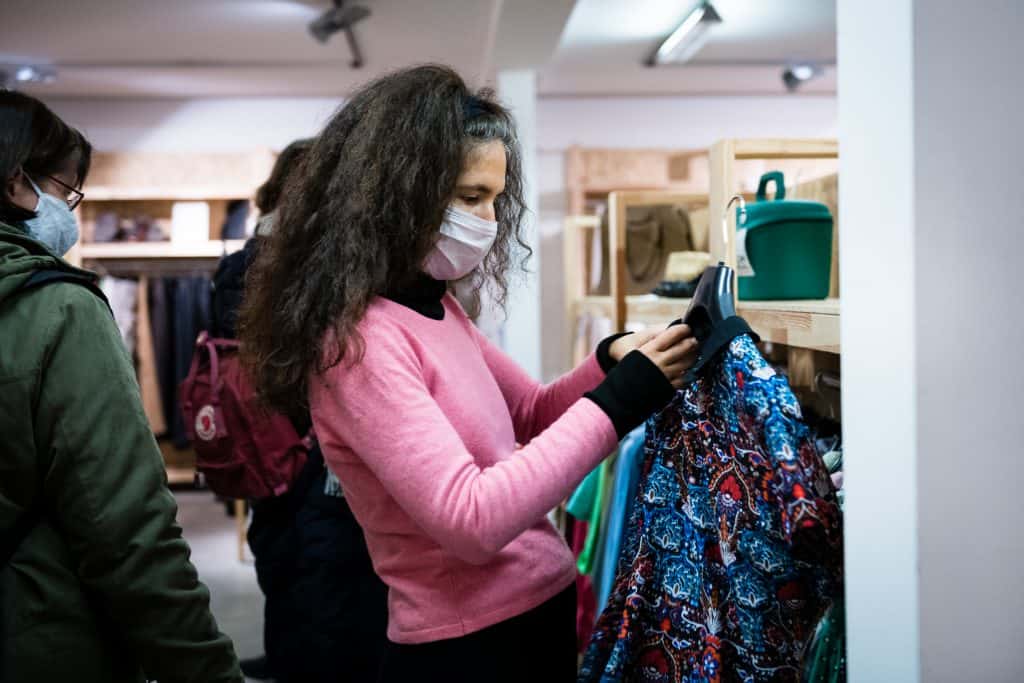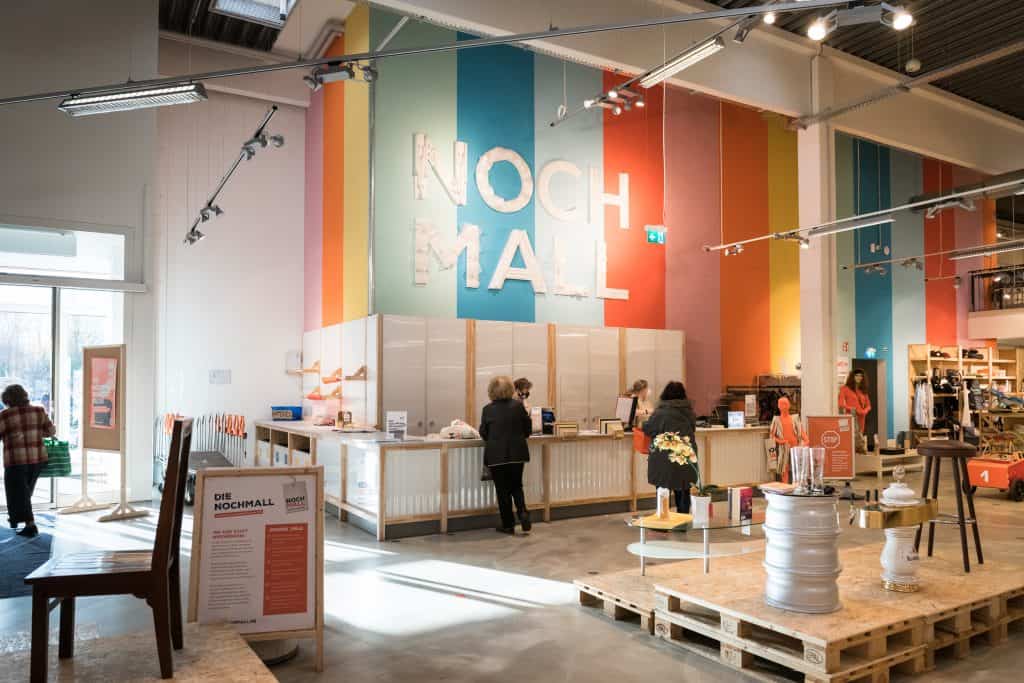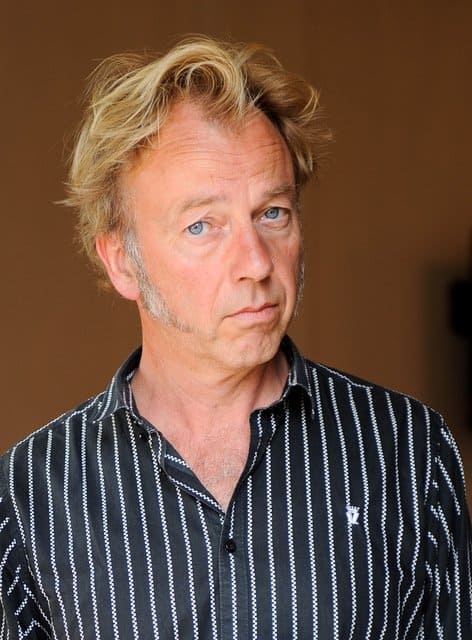Kebab stands. Hairdressers. Shisha bars. Cell phone stores. Berlin’s Hermannplatz is a riot of commerce at the junction of two districts, Kreuzberg and Neukölln. The backdrop to it all is the mighty Karstadt building, a 775,000-square-foot department store that was the largest and most modern in the world when it opened in 1929. In September, the Karstadt logged another milestone by becoming the first department store in Germany to dedicate a large portion of its floor space exclusively to used goods.
The symbolism is as potent as the real-world impact — imagine if Bloomingdale’s or Saks dedicated a whole floor to used blouses and pre-owned pants. But in the German capital, the move is in line with a broader goal: Berlin aims to become a zero-waste city.

Its Waste Management Concept 2020-2030 is a 10-year plan that tackles the problem of waste from three angles. First, the city aims to encourage the reuse — or continued use — of objects that still have some life in them. Second, it wants to improve the recycling of waste that can’t be reused. And third, it aims to capture and repurpose the energy used in burning the rest. The plan builds on the Re-Use Berlin initiative, which the government launched in 2018 to inspire residents to “re-use instead of throwing away.”

B-Wa(h)renhaus, the name of Karstadt’s second-hand goods department, is an outgrowth of this goal. “With 10,000 visitors, it has been very well received,” says a delighted Thomas Schwilling, who works for the city’s environment, transport and climate protection agency, which helped launch B-Wa(h)renhaus. (The name is a pun that combines the German words for “conserve” and “warehouse.”)

“Shopping and Saving the World,” reads the sign at the entrance. Beyond is a 7,000-square-foot sales area displaying all manner of upcycled goods: sparkling beer glasses; CDs, records and books; an overhauled vacuum cleaner; tables and beds made of discarded wood from Berlin construction sites; children’s toys; hi-fi systems, and rows and rows of textiles. There is even a vending machine that will take your old cell phone, estimate its value, and if you choose, disburse a refurbished one on the spot for an extra charge. “We want to give used things a second life,” explains Schwilling.

This is not a new idea in Berlin — rescuing and repurposing goods has become a somewhat trendy pursuit in the capital. The streets of Neukölln and Kreuzberg are lined with second-hand stores, and numerous startups try their hand at upcycling, like the Berlin supermarket that sells expired food. Recently, two fashionistas caused a stir by dressing in clothes made exclusively of materials they found in donation boxes.
Research shows that orienting toward re-use could have a big impact. An entire truckload of old textiles is dumped or incinerated worldwide every second. And that’s just one small part of the waste that’s often right under our noses. “In every Berlin household there are around 220 intact but unused items,” says Schwilling.

If a system existed to resell those items to consumers who would otherwise purchase new ones, the environmental benefits would be almost incalculable. Think about all of the resources and energy that a single new item requires: the extraction of raw materials, the production, the transport, the storage. Factories, trucks, warehouses — millions of them — all of which need to be fueled up, climate controlled, flooded with light and washed down.

A study by the Institute for Energy and Environmental Research Heidelberg conducted on behalf of the Berlin city government throws into relief how much more milage existing items can give us. Wooden furniture often ends up in the trash after only one-third of its useful life. By extending its service for those remaining two-thirds, each piece could prevent up to 70 kilograms of emissions and reduce nearly 400 square feet of agricultural area. Doubling the useful life of a laptop from three to six years saves up to 140 kilograms of CO2.
With its Zero Waste strategy, the city government wants to harness this potential.

“The best garbage is no garbage at all,” says Schwilling. That’s why B-Wa(h)renhaus does more than just sell goods. A repair café, for example, was to launch in October. (It’s been delayed due to a second wave of Covid-19.) The idea is to teach customers to fix broken items so they don’t throw them out. Workshops and lectures on sustainability and environmental protection will also be held on the roof of the Karstadt building.
The B-Wa(h)renhaus is in its pilot phase and is slated to operate for six months. After a phase of evaluation, the plan is to open four more locations across the city.

Berlin also has NochMall, a 21,500-square-foot hall in the district of Reinickendorf operated by the city’s sanitation department. A supermarket, a pet supplies discounter and a bicycle store, it has proved wildly popular. Every morning, customers patiently wait out front for the doors to open.
Since it opened in August, it has had 1,200 visitors per day. A bright, spacious, Ikea-like hall welcomes the visitors, jazz trickles out of the sound system and there’s a mezzanine with a comfortable café. Once the pandemic has passed, a DJ will begin offering regular performances here using the NochMall record assortment. There will also be repair cafés and sewing classes.

“This is very important to us,” says manager Melanie Gille of the emphasis on creating an appealing shopping experience. “We want to address all social groups, whether bargain hunters, environmentally conscious consumers or collectors.”
Two thirds of the goods at NochMall come from municipal recycling yards; the remaining one third are donations. Unlike the B-Wa(h)renhaus, the NochMall has to cover its costs in the medium term — no easy task with Berlin’s rising rents and high personnel costs.
But their efforts seem to be panning out. Nadja, a 30-year-old social worker, came all the way from Lichtenberg, an hourlong journey on public transit, just to shop here. She was looking for a wall clock, but none are on offer at the moment. “There is simply not always what one is looking for,” she says, a pair of pants under her arm. She shrugs and smiles. “I will surely come back again soon.”









